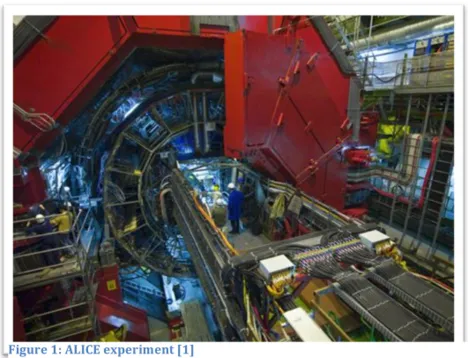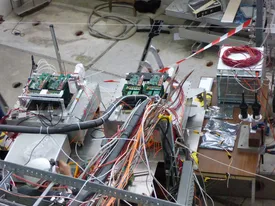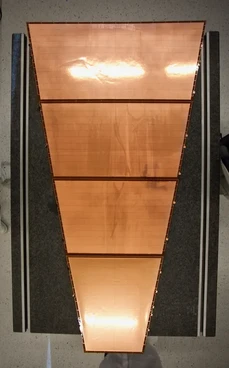ALICE Experiment

ALICE (A Large Ion Collider Experiment) is one of the four major experiments at the LHC (Large Hadron Collider), CERN. It is dedicated to the study of ultra-relativistic heavy-ion collisions. It has been designed to measure, in the most complete way possible, the particles produced in the collisions, so that the evolution of the system in space and time can be reconstructed and studied. The ALICE Time-Projection Chamber (TPC) is the main device, in the ALICE "central barrel", for tracking of charged particles and particle identification. The ALICE TPC is the largest detector of this type in the world and was designed to cope with the highest conceivable charged particle multiplicities.
However, the present MWPC (Multi Wire Proportional Chamber) readout of the TPC will no longer meet the increasing readout rate requirements: from Run 3 on, the LHC will deliver ion beams with lead ion bundles colliding at a rate of 50 kHz, which is about a factor of 100 above the readout rate of the TPC in Run 2. In order to study the properties of the formed quark gluon plasma, it is crucial to characterize all of the resulting particles created in such a collision. Therefore, the increased luminosity can only be exploited by significantly increasing the readout rate of the TPC.
TPC upgrade
The high interaction rates foreseen for Run 3 and Run 4 at the CERN LHC necessiate a major upgradeof the TPC, with the replacement of the existing readout chambers (MWPC) with the GEM (Gas Electron Multiplier) detectors to substitute the gated read-out with a continuous one. The ALICE TPC is read-out by 36 IROCs (Inner Read-Out Chambers) and 36 OROCs (Outer Read-Out Chambers) trapezoidal chambers placed on each end-cap, in the inner and outer ring of the detector.
In an extensive R&D effort it was demonstrated that the specific requirements can be reached in an amplification scheme that employs four layers of GEM foils. The specific energy loss performance of the 4-GEM system, and hence the capability with which the TPC is able to identify particles, was demonstrated to be the same as for the existing MWPC chambers, and the stability against discharge is well suited for operation at the LHC in Run 3 and beyond. Figure 1 shows the GEMs of the first ever built detector segment of the TPC, which notably extends over more then 1.8 m and is in fact the largest GEM-based detector ever assembled. Our group at the TU München was involved in the project for which we built all full-size prototypes, ran a dedicated R&D program and participated in the production of the readout chambers and coordination duties.
After a nine-year period of R&D, construction, and assembly, the upgrade of the TPC was completed in 2020.
Further reading:
Pictures of the IROC chamber


